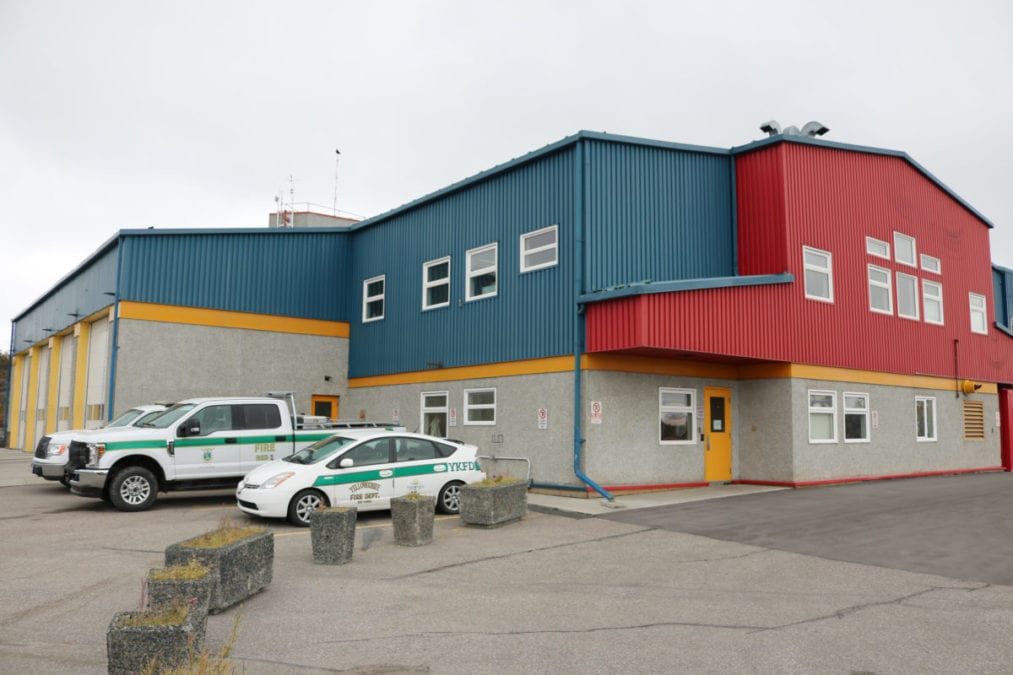Although some of the City of Yellowknife Fire Division's needs may not be eye-catching to the average resident, the division is evolving and its physical infrastructure is aging, according to deputy fire chief Craig MacLean and Eric Bussey, the city's public safety director.

Simon Whitehouse/NNSL photo
Based on city director of corporate services Sharolynn Woodward's initial Budget 2021 presentation at Monday's governance and priorities committee meeting, the city division has some modest requests this year, beyond $185,000 in renovations to the fire hall.
Among them include fire hall emergency response equipment that includes thermal imaging cameras, which firefighters use in responding to fires to identify hotspots; a power stretcher for emergency medical responders; and mobile radios for fire apparatus trucks and ambulance. This amounts to an estimated $84,500, according to Woodward's presentation.
"We want to be able to ensure that apparatus are an integral part of the response system, which is not just getting the equipment to the fire, but also firefighters or paramedics en-route are in communication with the dispatch over new information and other details that help them do an assessment of what they're getting into – or to be aware of other issues like roadblocks," Bussey said.
Air and power hose upgrades
Bussey and MacLean said the fire division is looking to replace the air and power hose systems to the vehicles, which haven't been upgraded since the fire hall opened in 1990.
The existing, 30-year-old systems either don't work or are not working the way they are supposed to, they said.
"Our vehicles, whether they're ambulances or fire trucks, have power and air supplied to them," MacLean explained. "All of our heavy apparatuses or large fire vehicles all have air brakes on them, so to keep the air up in those those systems so that they are immediately respondable, they're all pre-connected into an extended air hose and then when you leave the station and, upon starting up the vehicle, it automatically disconnects those hoses."
The system in need of replacement control the hoses in the line of vehicles.
"It would help avoid hoses getting driven over or getting wrapped around mirrors or handles or lighting or anything in the way of the vehicle that could potentially damage the system or cause a delay in the response," MacLean said.
He added that the power lines also keep batteries powered in all vehicles and provide charging systems for some medical equipment plugged inside the vehicles.
Fire hall renovations
The fire division is also looking to expand the building to allow for more washrooms. That work is estimated to be about $185,000. The additional washrooms would accommodate staff on site, which includes eight members on duty at any given time as well as dispatch operators and senior staff.
"This is one way to have some efficiency in terms of bathroom facilities, and shower capacities available as well. Having shower facility available is important after any fires," said Bussey.
But there is a much greater cost looming.
"We're looking at a bigger issue with regard to the whole fire hall because the fire hall now has met its operational life," Bussey explained. "And the fire staff complement has doubled since the fire hall opened."
The fire division currently has 32 full-time fire fighters with a fire chief and three deputy fire chiefs as well as a half-time administration position. MacLean and Bussey estimate that this is roughly double the size of the fleet since the fire hall opened in 1990.
The division believes that the current fire hall, as it evolves in the future, will remain part of the overall fire service needs, Bussey added, largely due to its location in the centre of town.